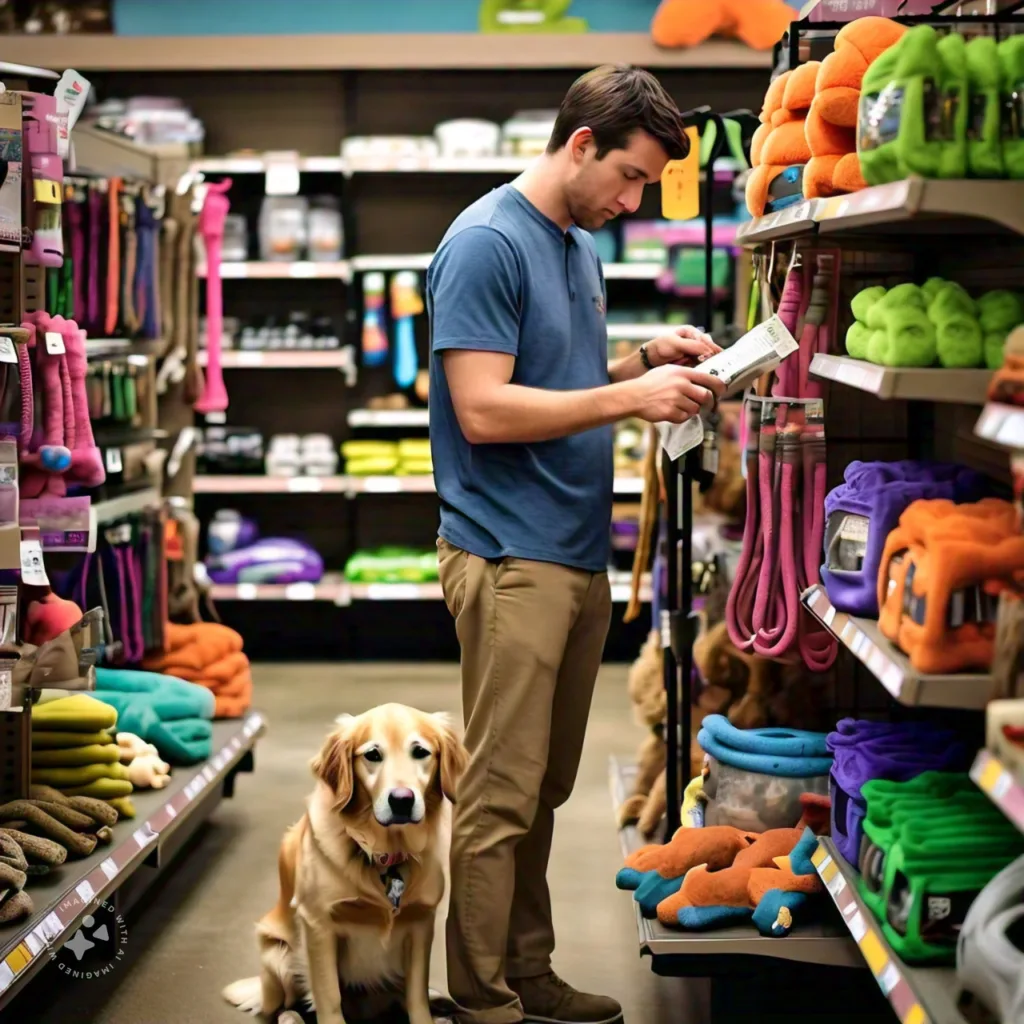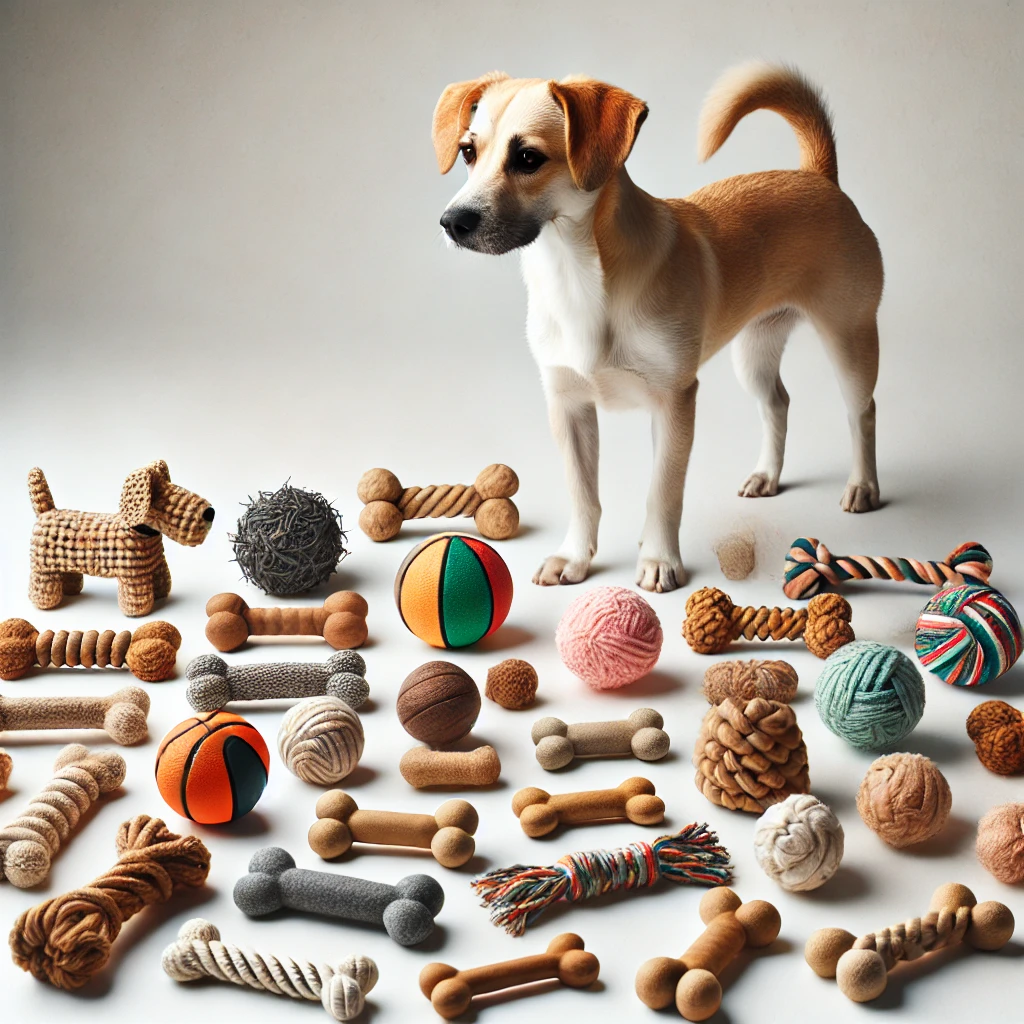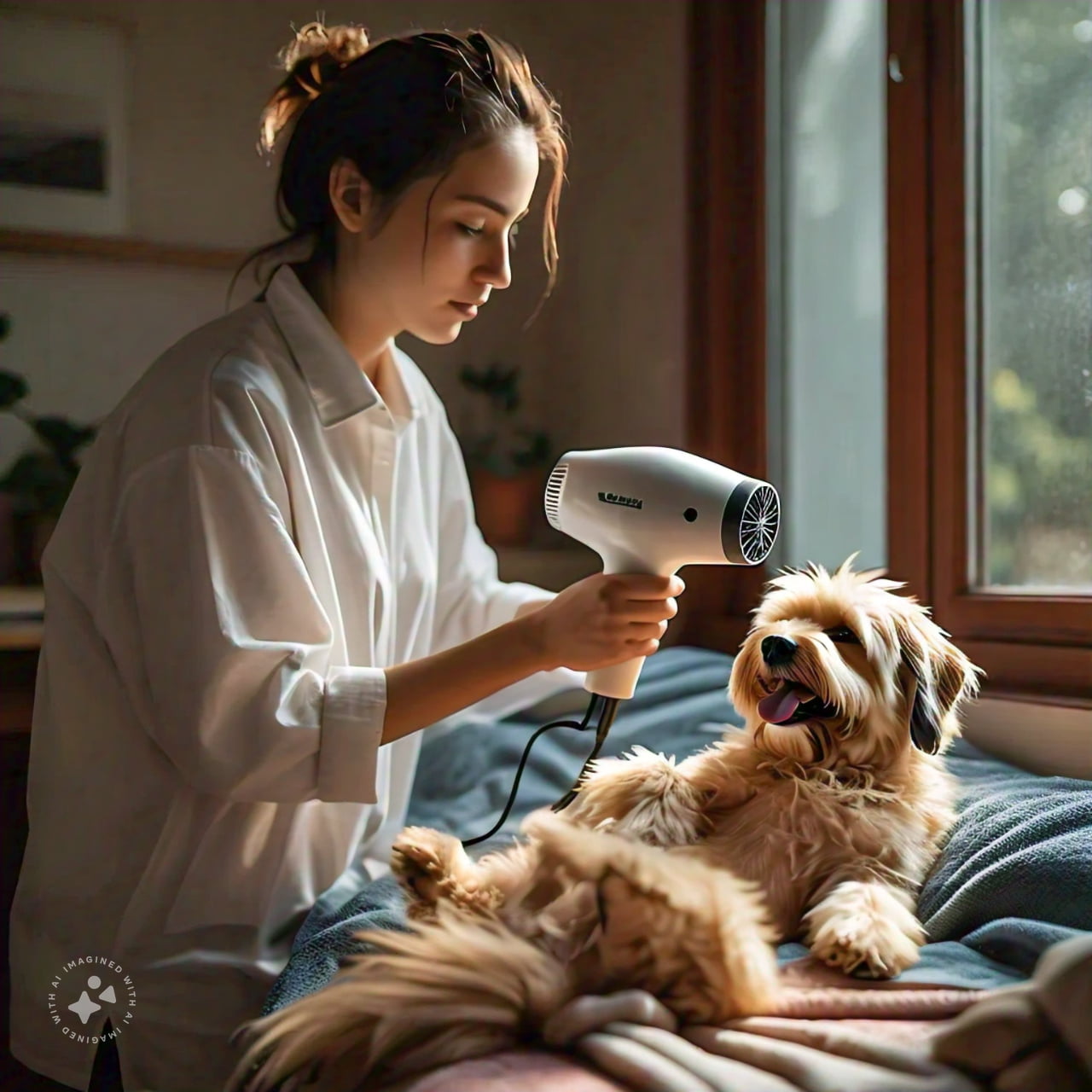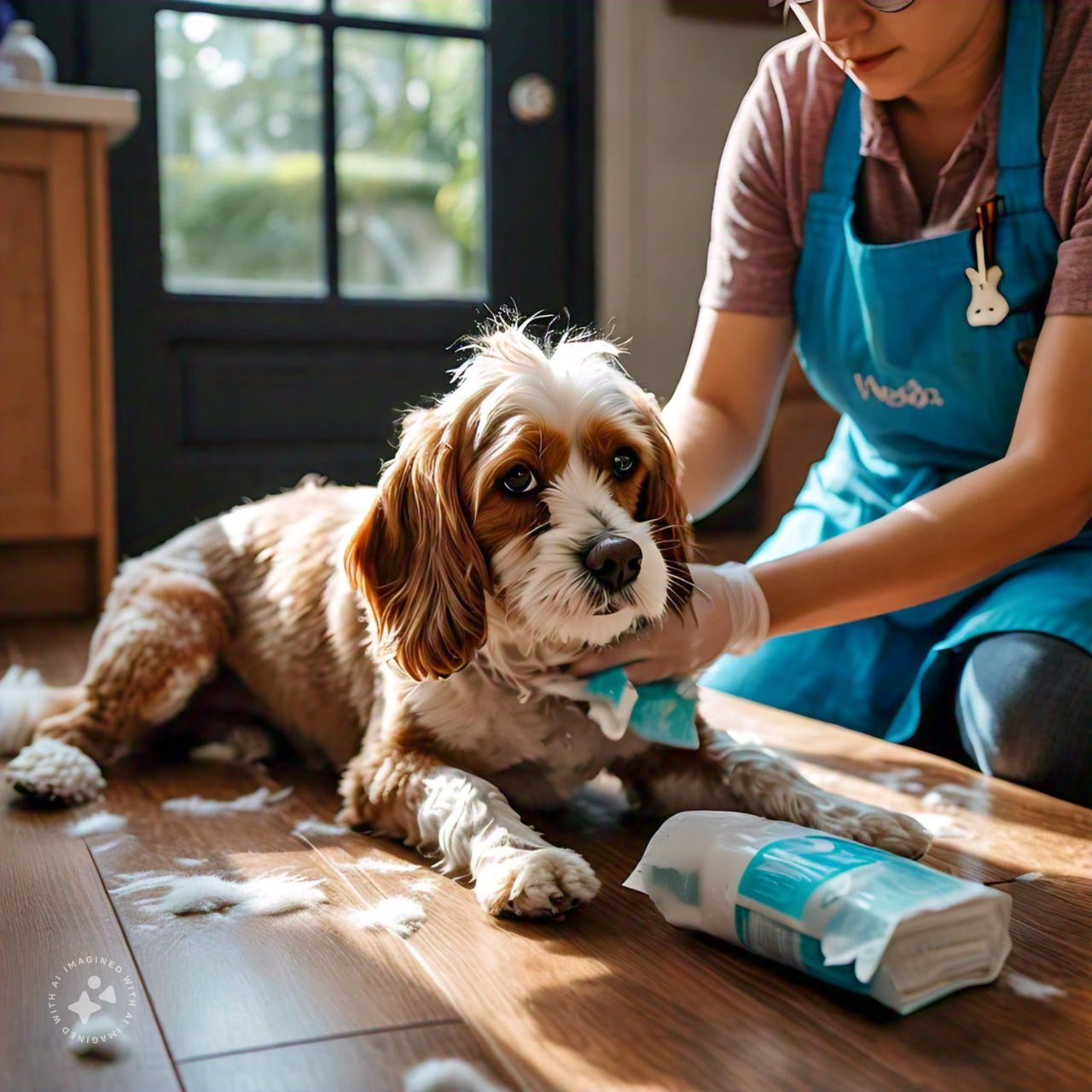Understanding the Labels: How to Identify Truly Non-Toxic Dog Toys
As a dog owner, you’re right to worry about the toys your furry friend plays with. Toxic materials can be lurking in seemingly harmless toys, putting your dog’s health at risk. But don’t worry, you don’t need to be a scientist to make informed choices. With this guide, you’ll learn how to decipher labels and make sense of the jargon, so you can confidently choose toys that are safe for your dog to chew, lick, and play with. By the end of this post, you’ll be empowered to make better choices and give your dog the non-toxic toys they deserve.
- Understanding the Labels: How to Identify Truly Non-Toxic Dog Toys
- The Hidden Dangers: What Materials Used in Dog Toys Make Them Toxic
- Safe Alternatives: What Are the Alternatives That Dog Toys Are Made Of
- Decoding the Labels: Where and How to Determine Good and Bad Materials
- The Good Guys: Which Companies Make Eco-friendly Dog Toys
- Product Spotlight: Which Products Are Known to Be Non-Toxic Dog Toys
- Non-Toxic Dog Toys Recommendation Tool
- How to Identify Misleading Marketing Tactics
- Common Myths Debunked: Separating Fact from Fiction
- What to Do If You Suspect Your Dog Has Been Exposed to Toxins
- To wrap up
The Hidden Dangers: What Materials Used in Dog Toys Make Them Toxic
While you’re shopping for dog toys, it’s vital to be aware of the materials used to make them. Unfortunately, many dog toys contain toxic materials that can harm your furry friend. In this section, we’ll explore the common toxic materials found in dog toys, the risks associated with them, and why manufacturers use them.
Common Toxic Materials and Harmful Chemicals Found in Dog Toys
Here is a table showing the common material used by manufacturers for making toys and risks associated with them.
| Material | Common Use | Associated Risks |
| Phthalates | Make toys soft and pliable | Reproductive issues, cancer |
| Lead | Paint and coatings | Neurological damage, organ failure |
| BPA | Used in some plastics | Hormonal imbalances, cancer |
| PVC | Type of plastic | Release toxic fumes when heated or burned |
| Formaldehyde | Preservative | Respiratory issues, cancer |
It’s vital to be aware of these risks and take steps to minimize your dog’s exposure to toxic materials.
Risks can also arise from the manufacturing process itself. For example, some manufacturers may use toxic chemicals to clean or treat their equipment, which can then contaminate the toys. This is why it’s crucial to choose manufacturers that prioritize safety and transparency.
Why Manufacturers Use Toxic Materials
The reason manufacturers use toxic materials is often due to cost and convenience. Toxic materials are often cheaper and easier to work with than safer alternatives. Additionally, manufacturers may not fully understand the risks associated with these materials or may not prioritize your dog’s safety. Some manufacturers may also use toxic materials to extend the shelf life of their products or make them more appealing to consumers.
Them being unaware of the risks or not prioritizing safety is not an excuse for putting your dog’s health at risk. As a responsible dog owner, it’s vital to educate yourself on the materials used in dog toys and choose manufacturers that prioritize safety and transparency.
Safe Alternatives: What Are the Alternatives That Dog Toys Are Made Of
Even with the risks associated with toxic dog toys, there are plenty of safe alternatives available in the market. As a responsible dog owner, it’s important to know what materials are used to make non-toxic dog toys. This knowledge will empower you to make informed decisions when choosing the right toys for your furry friend.
Natural and Recyclable Materials Used in Non-Toxic Dog Toys
Materials like natural rubber, cotton, and hemp are popular choices for making non-toxic dog toys. The use of recycled materials in dog toys is also becoming increasingly popular. Here is a table showcasing the type of natural or recyclable material that can be used to make dog toys and their benefits:
| Material Type | Benefits | Common Uses |
| Natural Rubber | Durable, biodegradable, gentle on teeth and gums | Chew toys, interactive toys |
| Cotton | Biodegradable, non-toxic | Plush toys, rope toys |
| Hemp | Biodegradable, durable | Rope toys, plush toys |
| Sustainably sourced Bamboo | Eco-friendly, durable, splinter-resistant | Chew toys, interactive toys |
| Recycled Plastics | Reduces waste, conserves resources | Interactive toys, puzzle toys |
| Wood | Biodegradable, natural | Puzzle toys, fetch toys |
| Recycled Rubber | Durable, eco-friendly | Chew toys, bouncy balls |
Innovative Materials Used in Modern Non-Toxic Dog Toys
An innovative material gaining traction in the dog toy industry is thermoplastic elastomers (TPE). TPE is a non-toxic, flexible, and durable material that’s resistant to abrasion and tears. It’s often used to make chew toys, squeaky toys, and interactive toys.
TPE is a great alternative to traditional plastics as it’s bisphenol-A (BPA) free and phthalate-free. It’s also easy to clean and can be sanitized in the dishwasher. When shopping for TPE dog toys, look for certifications like FDA compliance and EU regulations.
What’s more, some dog toy manufacturers are using innovative materials like sugarcane and potato starch to make biodegradable dog toys. These materials are compostable and reduce greenhouse gas emissions. As a responsible dog owner, it’s important to stay informed about these innovative materials and their benefits.
Decoding the Labels: Where and How to Determine Good and Bad Materials
Not all dog toys are created equal, and it’s necessary to decipher the labels to ensure you’re providing your furry friend with safe and non-toxic playthings.
Understanding Certifications and Labels
Clearly, certifications and labels can be overwhelming, but it’s crucial to understand what they mean.
Red Flags to Watch Out for on Dog Toy Labels
Determine if the label mentions any of the following red flags:
- Lead, Cadmium, or Mercury, which are toxic heavy metals
- Formaldehyde, a known carcinogen
- Vinyl or PVC, which can contain phthalates and other harmful chemicals
- Recycled materials, which may contain unknown substances
The presence of these red flags should raise concerns about the toy’s safety, and it’s best to err on the side of caution and avoid purchasing it.
Tips for Reading Between the Lines on Dog Toy Packaging

Determine what’s not being said on the label. Look for vague descriptions like “non-toxic” or “safe” without any specific certifications or explanations. Be wary of labels that claim to be “eco-friendly” or “natural” without providing concrete evidence.
- Check the ingredient list, if available, to identify potential allergens or toxins
- Research the manufacturer to ensure they have a good reputation and transparent testing practices
- Look for transparency in the labeling, such as clear descriptions of materials and manufacturing processes
The more you know about the toy’s composition and manufacturing process, the better equipped you’ll be to make an informed decision about its safety for your dog.
For instance, if a label claims to be “made from natural rubber,” but doesn’t specify the type of rubber or its origin, it may be worth investigating further to ensure it meets your standards for non-toxicity.
The Good Guys: Which Companies Make Eco-friendly Dog Toys
Keep in mind that not all dog toy manufacturers prioritize your pet’s safety. However, there are some companies that stand out from the rest, committed to producing non-toxic dog toys that you can trust.
Established Brands with a Commitment to Safety
Safety-conscious pet owners often turn to brands like West Paw Design, Outward Hound, and Pet Zone, which have built a reputation for creating high-quality, non-toxic dog toys. These companies have been in the industry for years, consistently delivering products that meet or exceed safety standards. They use eco-friendly materials, rigorous testing, and transparent manufacturing processes to ensure their toys are safe for your furry friend.
For instance, West Paw Design uses a proprietary material called Zogoflex, which is BPA-free, phthalate-free, and non-toxic. Outward Hound, on the other hand, conducts regular testing to ensure their toys meet or exceed international safety standards. Pet Zone is committed to using eco-friendly materials and sustainable practices in their manufacturing process.
Newcomers Making Waves in the Non-Toxic Dog Toy Industry
The rise of new companies like P.L.A.Y. (Pet Lifestyle And You) and Furry Fido Boutique is a promising trend in the non-toxic dog toy industry. These newcomers are shaking things up by offering innovative, eco-friendly products that cater to the growing demand for safe and healthy dog toys.
Make no mistake, these companies are not just jumping on the bandwagon; they’re genuinely committed to creating products that are good for your dog and the environment. P.L.A.Y., for example, uses recycled plastic and donates a portion of their profits to animal welfare organizations.
Furry Fido Boutique, on the other hand, offers a range of handmade, natural rubber toys that are free from harsh chemicals and toxins. Their commitment to sustainability and safety is evident in their carefully sourced materials and rigorous testing processes.
What to Look for in a Manufacturer’s Safety Policy
If you’re considering a new brand, it’s imperative to scrutinize their safety policy. Look for companies that provide transparent information about their materials, testing processes, and manufacturing practices. A reputable manufacturer should be able to provide clear answers to your questions about their products’ safety.
Be wary of companies that are evasive or secretive about their safety protocols. A lack of transparency can be a red flag, indicating that the company may be hiding something. Instead, opt for manufacturers that proudly showcase their commitment to safety and sustainability.
Newcomers to the industry may not have the same level of recognition as established brands, but that doesn’t mean they’re not committed to safety. Look for certifications like CPSIA (Consumer Product Safety Improvement Act) or EN71 (European Toy Safety Standard), which indicate that the company meets or exceeds international safety standards.
Product Spotlight: Which Products Are Known to Be Non-Toxic Dog Toys
Once again, as a responsible dog owner, you want to ensure that your furry friend is playing with safe and non-toxic toys. In this section, we’ll highlight some product categories that are known for their non-toxic materials and manufacturing processes.
Plush Toys and Stuffed Animals
With so many adorable plush toys and stuffed animals on the market, it can be overwhelming to choose the right one for your dog. Look for products made from natural fibers like cotton, hemp, or bamboo, which are biodegradable and non-toxic. Brands like Earthbath and P.L.A.Y. offer a range of plush toys made from eco-friendly materials that are safe for your dog to snuggle and play with. When shopping for plush toys, make sure to check the filling material as well. Opt for toys filled with natural fibers like cotton or wool instead of polyester fiberfill, which can be harmful if ingested.
Chew Toys and Durable Treat Dispensers
Known for their durability and long-lasting chewability, rubber toys are a popular choice among dog owners. Brands like Kong and West Paw Design offer a range of rubber toys made from non-toxic materials like natural rubber and silicone. These toys are not only safe for your dog to chew on but also provide mental stimulation and satisfaction. Toys made from hard nylon or durable plastic are also great options for aggressive chewers. Look for brands like Nylabone and GoughNuts, which use non-toxic materials and manufacturing processes to create long-lasting chew toys. Toys that double as treat dispensers are another great option for mental stimulation and slow feeding. Brands like Outward Hound and Omega Paw offer a range of treat-dispensing toys made from non-toxic materials like silicone and rubber.
Interactive Toys and Puzzle Toys
With interactive toys and puzzle toys, you can challenge your dog’s problem-solving skills and keep them engaged for hours. Look for toys made from non-toxic materials like wood, cardboard, or recycled plastic. Brands like Outward Hound and Nina Ottosson offer a range of interactive toys and puzzle toys that are safe and stimulating for your dog. When shopping for interactive toys, make sure to check the materials used and the manufacturing process. Opt for toys with minimal plastic components and no small parts that can be easily detached and ingested. Another important factor to consider is the durability of the toy. Look for toys that are designed to withstand your dog’s chewing and playing, and can be easily cleaned and maintained.
Non-Toxic Dog Toys Recommendation Tool
How to Identify Misleading Marketing Tactics
After researching and comparing different dog toys, you may think you’ve found the perfect non-toxic option for your furry friend. However, it’s crucial to be aware of misleading marketing tactics that can deceive even the most cautious pet owners.
Greenwashing and False Claims
Tactics like greenwashing, where companies make false or exaggerated claims about their products’ eco-friendliness, are common in the pet industry. You may come across labels that claim to be “natural,” “eco-friendly,” or “non-toxic,” but these terms are often unregulated and meaningless. Be wary of companies that use vague language or make sweeping statements without providing concrete evidence or certifications.
Some companies might even use fake certifications or seals of approval to make their products appear safer than they actually are. Don’t assume that a product is safe just because it has a fancy label or logo. Always research the certification and its requirements to ensure it’s legitimate and trustworthy.
Misleading Labels and Certifications
Little do you know, some dog toy manufacturers use misleading labels and certifications to deceive consumers. For instance, a product might claim to be “BPA-free,” but still contain other harmful chemicals like phthalates or PVC. Don’t assume that a product is safe just because it’s labeled as “BPA-free.”
A closer look at the label might reveal that the certification only applies to a specific aspect of the product, such as the packaging, rather than the toy itself. Always read the fine print and look for certifications that cover the entire product, not just a component.
A good example of this is the “ASTM” certification, which is often used to imply that a product meets certain safety standards. However, ASTM is a voluntary standard, and manufacturers can choose which tests to conduct and how to interpret the results. Don’t rely solely on ASTM certification; look for more comprehensive and rigorous testing standards.
How to Verify Manufacturer Claims
Identify the manufacturer’s claims and certifications, and then research them thoroughly. Look for third-party testing and certifications from reputable organizations, such as the International Organization for Standardization (ISO) or the U.S. Consumer Product Safety Commission (CPSC). Verify that the certification is current and applicable to the specific product you’re considering.
When in doubt, contact the manufacturer directly and ask for more information about their materials, testing, and certifications. Don’t be afraid to ask tough questions, and be wary of companies that are evasive or unresponsive.
The more you know about the manufacturer’s claims and certifications, the better equipped you’ll be to make informed decisions about your dog’s toys. By being vigilant and doing your research, you can avoid falling prey to misleading marketing tactics and ensure your furry friend plays safely and happily.
Common Myths Debunked: Separating Fact from Fiction
To make an informed decision when choosing non-toxic dog toys, it’s crucial to separate fact from fiction. Let’s investigate some common myths that might be misleading you.
The Myth of “Natural” Being Synonymous with “Non-Toxic”
One of the most common misconceptions is that “natural” automatically means “non-toxic.” Unfortunately, this is not always the case. While natural materials can be a safer choice, some natural substances can still be harmful to your dog. For example, certain plants like sago palms or cycad palms are natural but highly toxic to dogs. Similarly, natural rubber can contain harmful chemicals like phthalates or lead.
When shopping for dog toys, look for certifications like OEKO-TEX or ASTM, which ensure that the materials meet certain safety standards. Don’t rely solely on the “natural” label; instead, research the specific materials used and their potential risks.
The Misconception of “Made in the USA” Guaranteeing Safety
You might assume that dog toys made in the USA are automatically safer than those made in other countries. While it’s true that the USA has stricter regulations and quality control measures in place, this doesn’t guarantee that a toy is non-toxic. Some manufacturers may still use harmful materials or cut corners to save costs.
Guaranteeing safety requires more than just a “Made in the USA” label. Look for third-party certifications, such as UL (Underwriters Laboratories) or CPSC (Consumer Product Safety Commission), which ensure that the toy meets certain safety standards.
Other Common Misconceptions About Non-Toxic Dog Toys
Misconception often surrounds the idea that certain materials are inherently safe. For example, some people believe that nylon or polyester are safe materials, but these can still contain harmful chemicals like BPA or phthalates.
Safety should always be your top priority when choosing dog toys. Don’t assume that a toy is safe just because it’s made from a certain material or has a specific label. Instead, research the manufacturer, read reviews, and look for third-party certifications to ensure that you’re providing your dog with a safe and healthy play option.
What to Do If You Suspect Your Dog Has Been Exposed to Toxins
For pet owners, discovering that your dog has been exposed to toxins can be a distressing experience. However, it’s vital to remain calm and take immediate action to ensure your dog’s safety.
If you’re concerned about the safety of your dog’s toys, it’s crucial to educate yourself on How to Avoid Buying Pet Products with Toxic Chemicals. By doing so, you’ll be better equipped to identify potential hazards and make informed purchasing decisions.
Identifying Symptoms of Toxic Exposure
Exposed to toxins, your dog may exhibit a range of symptoms, from mild to severe. **Keep a close eye out for signs such as vomiting, diarrhea, lethargy, and excessive drooling**, as these can indicate toxic exposure. In severe cases, your dog may experience seizures, tremors, or even organ failure. **It’s vital to monitor your dog’s behavior and health closely**, as prompt identification and treatment can significantly improve outcomes.
If you suspect your dog has ingested a toxic substance, **do not attempt to induce vomiting** unless instructed to do so by a veterinarian or animal poison control hotline. Instead, gather any remaining pieces of the toy or substance and contact a veterinary professional for guidance.
First Aid and Emergency Procedures

Even if you’re unsure whether your dog has been exposed to toxins, it’s always better to err on the side of caution. **Seek immediate veterinary attention** if you notice any of the symptoms mentioned above. Your veterinarian may administer activated charcoal to absorb the toxin, perform gastric lavage, or provide supportive care to manage symptoms.
In the event of an emergency, keep the phone numbers of your local animal hospital and the ASPCA’s Animal Poison Control Center (888-426-4435) handy. **Stay calm and provide as much information as possible** about the suspected toxin and your dog’s symptoms to ensure the best possible outcome.
Your veterinarian may also recommend a course of treatment, including medication, fluids, and observation. Be sure to follow their instructions carefully and monitor your dog’s progress closely.
Long-Term Monitoring and Prevention Strategies
Little things can make a big difference in preventing future toxic exposures. **Regularly inspect your dog’s toys** for signs of wear and tear, and replace them promptly if you notice any damage. Additionally, **choose toys made from non-toxic, durable materials**, such as natural rubber or nylon, and opt for products from reputable manufacturers.
Long-term monitoring is crucial to ensure your dog’s continued health and safety. **Schedule regular check-ups with your veterinarian** to monitor your dog’s overall health and catch any potential issues early.
By taking these steps, you can help minimize the risk of toxic exposure and create a safer, healthier environment for your furry friend.
To wrap up
The journey to finding truly non-toxic dog toys has been a crucial one, and by now, you should have a better understanding of what to look for in labels. You’ve learned how to decipher the confusing world of certifications, materials, and marketing claims, and you’re now empowered to make informed decisions when it comes to choosing safe toys for your furry friend.
Bear in mind, your diligence in selecting non-toxic dog toys can have a significant impact on your dog’s health and wellbeing. By being mindful of the materials and ingredients used in your dog’s toys, you’re taking a proactive step towards creating a safer and healthier environment for them to thrive in. So, go ahead and put your newfound knowledge to the test – your dog will thank you for it!
At Recommended Products Reviewed our goal is to educate you on the latest and trending products and technology that are sustaining and are recommended by experts and others like you. If you care about the environment and want to be made aware of similar trending products, please read our other articles and subscribe to our blog.
This blog post contains affiliate links. If you purchase through these links, I may earn a commission at no additional cost to you. As an Amazon Associate, I earn from qualifying purchases. This helps support the content and resources I provide. Thank you for your support!



Pingback: Eco-Friendly Dog Toys: The Ultimate Guide to Green Play